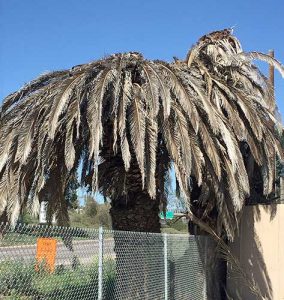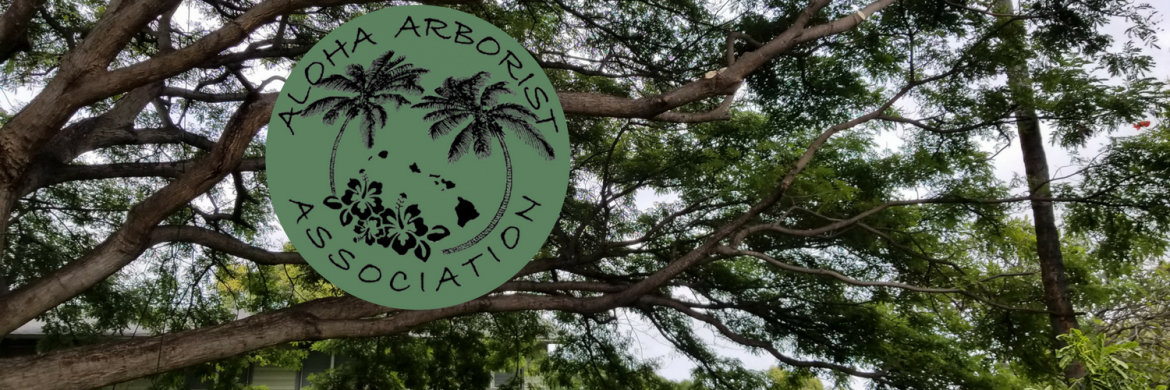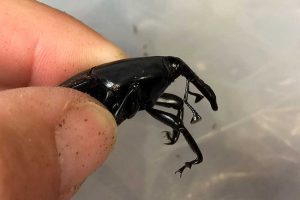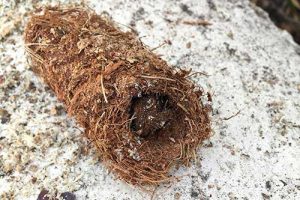Pest of the Month
South American Palm Weevil
(Rhynchophorus palmarum)
Photos: UC IPM Green Bulletin (Vol.6 No.2 August 2016)
Description: This weevil is currently not in Hawaii; please help keep an eye out for it. The adult is ~1 ½ inch long, shiny black, with small hairs on its body and a typical weevil “snout”. The larvae are 1-5” long and pupate in 3” fibrous cocoons. SAPW also is the primary vector of the nematode causing red ring disease and one of the most significant pests of oil and coconut palms.
Distribution: The weevil was recently discovered in San Diego County in California. It is native to South America, and Central America to Texas area. SAPW and the red ring nematode currently are both limited to South and Central America, and the Caribbean islands.
Hosts: There are 35 plant species in 12 different families that can be impacted by SAPW; Feeding on palms and sugar cane cause significant economic damage. (SAPW also is found feeding on ripe fruit of other species.) Hosts include Phoenix dactylifera and P. canariensis (date and Canary Island date palms), coconut palm, Cycas revoluta (king sago palm), Mexican fan palm, mango, papaya, avocado, breadfruit, banana, guava, citrus, and cocoa.
Symptoms and Damage: This weevil feeds on and destroys apical growth of the palm host, eventually killing the palm. Foliage yellows, new and emerging fronds bend and die. Frass, holes and tunneling, foul odor, and pupal cases also are observed.

Weevil feeding killed this palm; elsewhere, it has been found to vector a devastating nematode. Photo by J Pelham.
Control: Report discoveries in Hawai’i immediately to the state’s Department of Agriculture at 643-PEST, bring samples (in a sealed bag) to HDOA, or file a report at: reportapest.org. Chemical control is ineffective at destroying weevils and larvae once a palm is infested. Infested tree material should be chipped and treated with an insecticide, burned or buried deeply.
Additional Resources:
“Invasive Species Compendium: Rhychophorus palmarum,” (updated June 2016),” CAB International. Retrieved from: www.cabi.org http://www.cabi.org/isc/datasheet/47473
“South American Palm Weevil Detected in San Diego County,” UC IPM Green Bulletin (Vol.6 No.2 August 2016), p.1, p.5. URL: http://www.ipm.ucdavis.edu/PDF/PUBS/greenbulletin.2016.august.pdf


